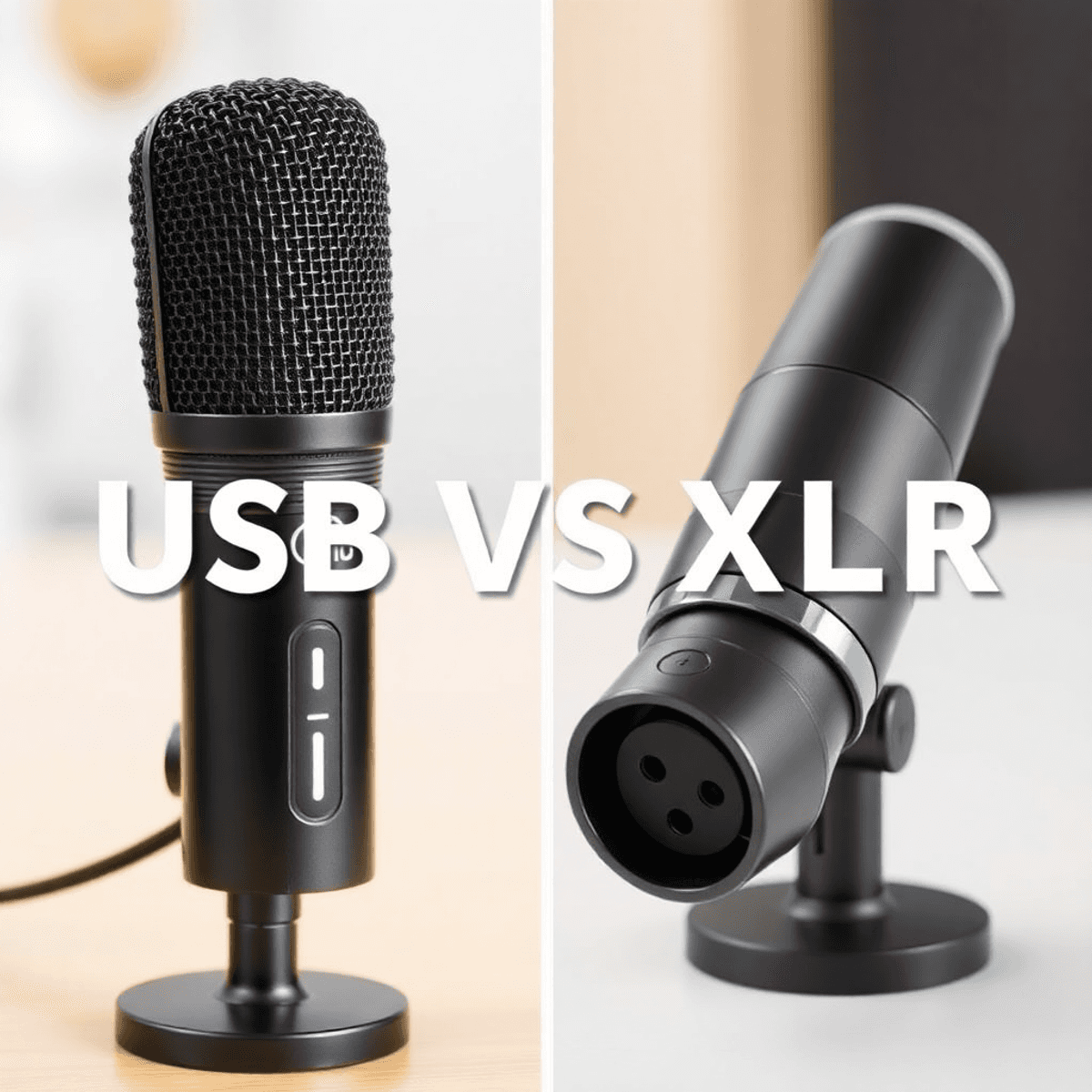
USB vs XLR Microphones for Podcasting: Which Should You Choose?
|
|
Time to read 2 min
|
|
Time to read 2 min
This article helps new podcasters choose between USB and XLR microphones by breaking down the pros, cons, and use cases for each. It addresses common buying objections like setup complexity, cost, and sound quality, and offers a clear comparison to guide readers toward the best microphone for their podcasting needs—whether they’re starting out or planning to grow a full studio setup.
If you're starting a podcast, one of the first big decisions you'll face is choosing between a USB microphone and an XLR microphone. The good news? Both options can deliver great sound — but which one is right for you depends on your needs, budget, and long-term goals.
Let’s break it down in a simple way so you can make the right decision without the tech overload.
Perfect for: New podcasters, solo shows, remote recording, or creators on a budget.
Why people love USB mics:
No extra gear needed. Just plug directly into your computer and start recording.
Super portable. Great for travel, guest interviews, or recording on the go.
Affordable. Quality USB mics can cost less than a mixer or audio interface.
Common objections resolved:
“I don’t want to buy a bunch of equipment.” — You don’t have to. A USB mic is all you need.
“I’m not tech-savvy.” — No problem. Setup takes just minutes.
“Will the audio be good enough?” — Yes. Mics like the Blue Yeti or Shure MV7 deliver pro-level sound.
Best for: Quick setups, budget-conscious beginners, or podcasting from your home office.
Perfect for: Podcasters planning to build a long-term show or studio setup.
Why podcasters upgrade to XLR:
Superior audio control. XLR mics are more flexible when it comes to EQ, gain, and tone shaping.
Expandable setup. You can mix multiple mics and channels for interviews or co-hosts.
Studio-quality sound. These are the mics you’ll see in pro podcast studios.
Common objections resolved:
“Isn’t that too advanced for me?” — It’s more hands-on, yes — but easy to learn.
“Do I need an interface or mixer?” — Yes, and that’s what unlocks the audio control.
“Is it worth the extra cost?” — If you want to scale or improve quality over time, absolutely.
Best for: Multi-host shows, high-end production, or anyone planning to grow a serious podcast.
Feature
USB Microphone
XLR Microphone
| Setup | Plug-and-play | Requires audio interface/mixer |
| Portability | High (just a cable & mic) | Less portable (needs extra gear) |
| Sound Quality | Great for beginners | Best for pro-level control and clarity |
| Budget | Lower upfront cost | Higher initial investment |
| Best Use Case | Solo podcasters, remote guests | Studios, co-hosts, advanced editing |
Choose a USB microphone if you want to get started fast, with minimal setup and great sound at a reasonable price.
Choose an XLR microphone if you’re aiming for studio-level sound, more control, and plan to expand your podcast over time.
Both options have their place — it all depends on how you want to start and grow your podcast.
Check out our curated collection of USB and XLR podcast microphones at Hollywood DJ — from trusted brands like Shure, Headliner, and Focusrite. Whether you're just starting or ready to level up, we've got the mic and preamp for your voice.